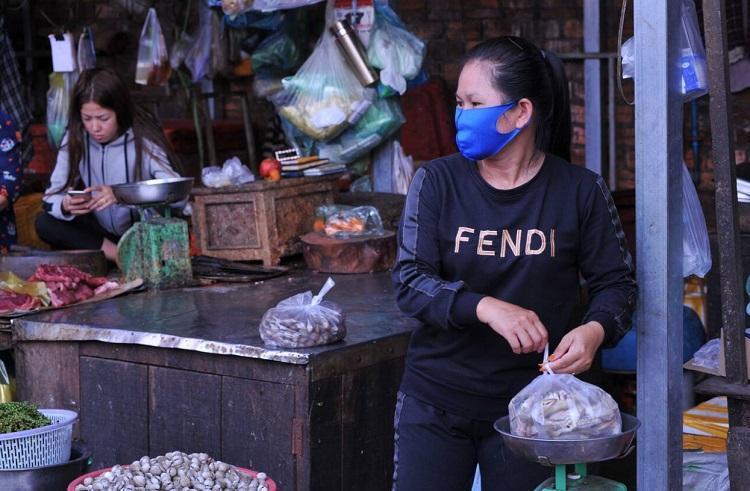
Alamy Photo
One thing is clear about the COVID-19 pandemic, as stock markets tumble, schools and universities close, people stockpile supplies and home becomes a different and crowded space: this is not just a health issue. It is a profound shock to our societies and economies, exposing the deficiencies of public and private arrangements that currently function only if women play multiple and underpaid roles.
With children out of school, mothers at home may still work, but many have also become teachers and caregivers, with consequences for those previously employed in those roles. For the 8.5 million women migrant domestic workers, often on insecure contracts, income loss also affects their dependents back at home. Professional women are reporting the dilemma of needing to return to the office but are having to forgo that to enable their higher-earning partners’ continued work. As schools close in more countries, the number of mothers facing this across the world rises and the consequences accumulate.
We need far more sex-disaggregated data to tell us how the situation is evolving, including on differing rates of infection, differential economic impacts, differential care burden, and incidence of domestic violence and sexual abuse.
Even without this, experience from previous major epidemics points us to specific strengths and vulnerabilities that we can look out for and be proactive to safeguard. Where governments or businesses put income protection in place, this can ease these dilemmas, sustain incomes and avoid driving households into poverty. This response must also include those in the informal economy, where most women who work outside home make their livelihood. Such social protection is best directed specifically to women.
This is a moment for governments to recognize both the enormity of the contribution women make and the precarity of so many. This includes a focus on sectors where women are over-represented and underpaid, such as daily wage earners, small business owners, those working in cleaning, caring, cashiering and catering sectors and in the informal economy.
Globally, women make up 70 per cent of frontline workers in the health and social sector, like nurses, midwives, cleaners and laundry workers. We need mitigation strategies that specifically target both the health and economic impacts of the COVID-19 outbreak on women and that support and build women’s resilience. And to make those responses as well designed as possible, women should be fully engaged in their creation, be priority recipients of aid, and partners in building the longer-term solutions.
All of us engaged in this effort, whether public or private sector, need to take a coordinated, people-centered approach to rapidly building health system capacity in both developed and developing countries, making a conscious effort to put women front and center.
For example, creating better access to appropriate personal protective equipment for home-based caregivers, and removing obstacles to their work, by promoting flexible working arrangements, and ensuring supplies of menstrual hygiene products. These needs are even more important for areas under lockdown or quarantine. So too are considerations of gender-based violence that are exacerbated by these conditions, but may not receive the attention they need, in the drive to respond to the pandemic.
We know that levels of domestic violence and sexual exploitation spike when households are placed under the increased strains that come from security, health and money worries, and cramped and confined living conditions. Cyberviolence too has become a routine feature of the internet, and as movement restrictions increase online gaming and use of chat rooms, this is an area for vigilance to protect girls.
COVID-19 provides us with an opportunity for radical, positive action to redress long-standing inequalities in multiple areas of women’s lives. There is scope for not just endurance, but recovery and growth. I ask governments and all other service providers including the private sector to take this opportunity to plan their response to COVID-19 as they have never done before, and fully take a gender perspective into account, proactively building gender expertise into response teams and embedding gender dimensions within response plans. For example, include surge funding for women’s shelters so they can provide for women who need to escape violent relationships, and aim economic support and bail outs specifically at retail sectors, hospitality and small businesses where women are predominantly employed on precarious contracts, if any, and are most vulnerable to forced cost-saving.
All of this needs funding; organizations responding to COVID-19 need budgeted resources for gender and social inclusion and I urge donors to include this in their support, viewing this as a constant, strongly positive element to include in development budgets and enhancing rather than cutting support to gender equality measures. Organizations serving women need assistance to bolster their response and to prepare for the recovery. This needs resources that many organizations lack. We appeal to funders to enhance their support for women rather than take an austerity approach. A global, coordinated response of the magnitude that followed the financial crisis is needed, constructed with a gender lens, and fully inclusive.
This is a time of reckoning for our national and personal values and a recognition of the strength of solidarity for public services and society as a whole. This is an opportunity to build back better, stronger, resilient and equal societies. It is a time for bold prioritization. Taking the right steps now with an eye to a restored future could bring both relief and hope to the women of the world.
*U.N. Under-Secretary-General and U.N. Women Executive Director